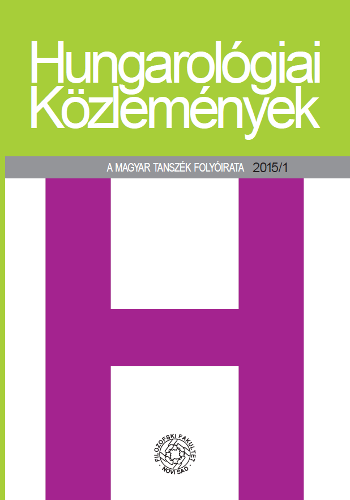Magyar és szerb szavak érzelmi értékének vizsgálata a konnotatív differenciál skála segítségével
Examination of the Emotional Value of Hungarian and Serbian Words Using the Connotative Differential Scale
Author(s): Beáta GrabovacSubject(s): Psychology, Psycholinguistics, Finno-Ugrian studies, South Slavic Languages
Published by: Филозофски факултет, Универзитет у Новом Саду
Keywords: bilingualism; verbal emotional stimuli; connotative differential
Summary/Abstract: The aim of our study was to present the results of a research, which studied the affective space in Hungarian and Serbian language using Hungarian-Serbian early bilinguals, from a dimensional perspective. Osgood and colleagues developed the first version of the semantic differential scale in 1957, which measured three dimensions of affective meaning by using three factors: evaluation – potency – activity. Their work was followed by a great number of studies, which wanted to check the number of factors and their culture-independent nature, as well as the location of various emotional stimuli in the affective space. Today, there are several versions of the scale available, for example, the one using the visual SAM-scales or the connotative differential, which checks a slightly different factor combination. Our results support the boomerangshaped distribution of verbal emotional stimuli both in Hungarian and in Serbian, in early bilingual speakers.
Journal: Hungarológiai Közlemények
- Issue Year: 16/2015
- Issue No: 1
- Page Range: 25-34
- Page Count: 10
- Language: Hungarian

